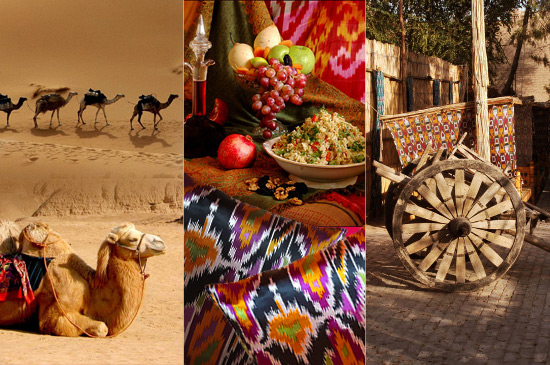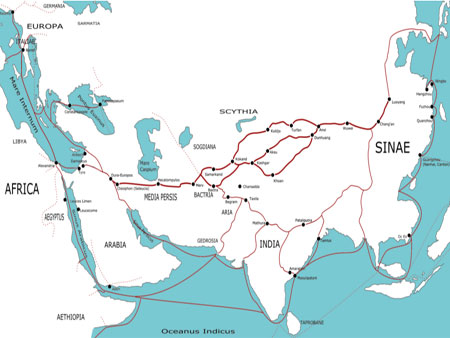The Great Silk Road

During the XV - XVI centuries there existed thousands of towns and roads that crossed the Asian continent and led to the West.Caravans passed by those roads, and each of the caravans was filled with exotic clothes, oriental goods and spices. Towns and cities, caravanserais gradually grown on those roads.
Numerous centres of national crafts, art schools, madrasahs, palaces and mausoleums were created there. Traders, missionaries and pilgrims traveled and brought to the region new religions, customs, the goods (glass, porcelain, soap, gunpowder) and different cultures. For centuries, the Great Silk Road united countries by such peaceful acts as trading, exchange of cultural and spiritual values that are unique for the whole mankind.
A special long-term program, which includes proposals for the revival of historical heritage, was created in cooperation with UNESCO. In 1994 the Declaration "On the revival of the Great Silk Road" was accepted in Samarkand .
 The main tourist road is crossed with 32 towns and cities of Central Asia. Gems of the Silk Road are Tashkent, Samarkand, Bukhara, Khiva and cities in Fergana Valley.
The main tourist road is crossed with 32 towns and cities of Central Asia. Gems of the Silk Road are Tashkent, Samarkand, Bukhara, Khiva and cities in Fergana Valley.
Many centuries ago the Great Silk Road that connected Europe with Asia, contributed to the development of Central Asia, and in particular, Samarkand, Bukhara, Khiva and Shash (modern Tashkent). This cities survive a unique flavor to the eastern cities of their area, caravanserais and medieval monuments of Islamic architecture, the latter is causing the worldwide fame that the cities of Uzbekistan, which is gradually turning into one of world tourist destinations in Asia.
